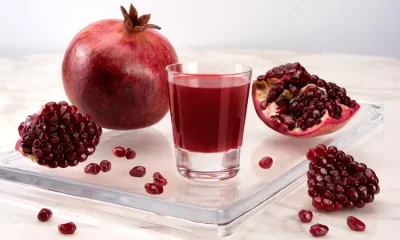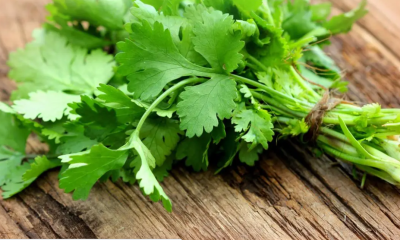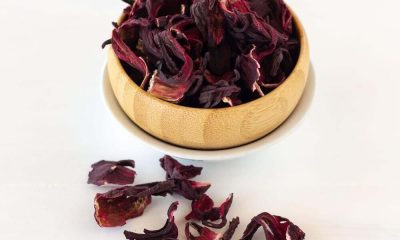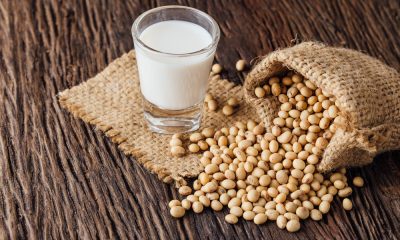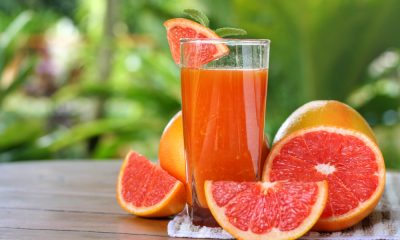Health
How to use cloves to cleanse the skin
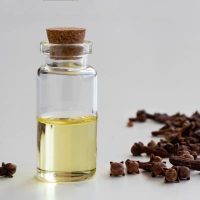
Discover how to use cloves to cleanse the skin.
Atypical use of the spice of incredible efficiency!
Clove is a famous natural remedy, widely used by Indian women to cleanse the skin and make it brighter. Used as an ingredient in many home cosmetics, the spice is a fabulous ally for beautiful skin, let’s find out why and how.
On Spice Island, you can buy quality cloves, clove buds, used as a condiment and natural remedy.
Benefits of cloves for skin
The essential and specific active principle of clove is eugenol, which will give most of the health benefits to the spice, such as its virtues against toothache or its aphrodisiac properties.
Clove has many benefits that will be beneficial for skincare: antiseptic, antibacterial, healing, and anti-inflammatory properties, etc.
In addition, the spice is rich in vitamins, minerals, and antioxidants, all of which are beneficial for the skin.
The composition of cloves, therefore, makes it possible to disinfect the skin, eliminate bacteria (a pimple forms when there is an abnormal proliferation of bacteria), relieve skin inflammation, and protect unaffected areas.
The action of cloves also accelerates the healing process.
This natural treatment, therefore, helps fight against impurities and skin problems such as skin conditions, acne, plaques, scars, pimples, inflammation, blackheads, fungal infections, scaly skin areas and irritated, bites, sores, etc.
Cloves also act on the skin indirectly, for example by preventing infectious diseases and by helping to eliminate harmful intestinal parasites.
It also acts on the immune system and the lymphatic system, promoting the production of white blood cells. All these actions have an impact on skin health.
How to use cloves for skin care?
Internal use
Prepare an infusion of cloves: boil 1 l of water to the boil, stop heating, and put 20 cloves to infuse for ten minutes. Remove the cloves and it’s ready!
Pour the drink into a glass bottle and store it in the refrigerator.
The cure consists of drinking a small glass on an empty stomach in the morning for 10 days. So hang in there, it’s strong! You can add other ingredients to facilitate its consumption (tea, other spices, rooibos, etc.).
External use
Boil 200 ml of water and put 3 or 4 cloves to infuse for ten minutes. Then remove them from the water, soak a cotton ball in the clove lotion and apply it to the pimple or the area to be treated. You can keep the lotion in the refrigerator for 48 hours.
This lotion is perfect for treating blemishes and purifying your skin. Just use it on the area to be treated once a day, before your nourishing and moisturizing treatments.
Another method, you can also add a drop of clove essential oil in the equivalent of a tablespoon of vegetable oil of your choice, slightly warmed: argan oil, coconut oil, jojoba oil, etc.
It is also possible to add a few drops of essential oil directly to your moisturizer cream
Health
7 benefits of Macadamia Nuts

Discover the 7 benefits of Macadamia Nuts.
While almonds may be America’s most popular nut, no one can deny the delicious lure of macadamia nut health benefits; this is a good thing because just like almond nutrition, macadamia nutrition has a powerful effect.
Macadamia nuts are incredible nutrient-packed powerhouses that come from the macadamia tree.
They contain some important essential vitamins and minerals, including vitamin A, iron, B vitamins, manganese, and folate, as well as protein, healthy fats, and antioxidants.
These remarkable nutrients are what give these amazing nuts their bountiful benefits – what benefits? I’m glad you asked.
Benefits of Macadamia Nuts
1.- Good for the heart
Macadamia nuts contain healthy fats that can help keep your arteries in good heart-healthy condition.
Because they are rich in monounsaturated fatty acids, they help lower cholesterol levels and reduce triglycerides, a type of body fat. When we reduce body fat, we can reduce the risk of coronary heart disease.
In a study conducted by the Pennsylvania State University Department of Nutritional Sciences, some subjects were randomly given macadamia nuts and compared to those who were fed a standard American diet.
Throughout the study, those who ate macadamia nuts saw reduced cholesterol levels and healthier heart markers overall, because macadamia nuts are a rich source of monounsaturated fatty acids, they help reduce the risks of risk factors of lipid/lipoprotein cardiovascular diseases.
2.- Fight the disease
Macadamia Nut Benefits Contains flavonoids that help prevent cell damage by protecting cells from environmental toxins; Once these phenomenal flavonoids are in the body, they turn into antioxidants, which is where the energy comes in; Antioxidants have this great job of finding free radicals in our bodies and destroying them, which is how we protect our bodies from disease.
Observations from the Antioxidant Research Laboratory study at the USDA Human Nutrition Research Center suggest that nut consumption is inversely related to the incidence of cardiovascular disease and cancer.
In addition to being nutrient-dense, the numerous phytonutrients contain positive health benefits.
Phenolic acids, flavonoids, and stilbenes help provide helpful antioxidants that can fight diseases like cancer; That’s why nuts, including macadamia, are some of the best cancer-fighting foods you can eat.
3.- Help in weight loss
The good fat content in macadamia nuts can help curb your appetite, not only, but macadamias contain palmitoleic acid; palmitoleic acid can increase fat metabolism, which in turn reduces fat storage.
Macadamia nuts contain a good balance of nutrients and fats, helping you feel satisfied with just a few of them.
Additionally, macadamia nuts contain beneficial dietary fibers that can help you achieve satiety and contain complex carbohydrates such as lignans, hemicellulose, amylopectin, mucilage, gums, and insoluble cellulose that help with digestive issues and reduce pesky hunger pangs.
There is even evidence that nuts like macadamia nuts may have positive effects on the prevention of metabolic syndrome, although more research is needed to validate this belief.
4.- Supports the intestine
Containing soluble and insoluble dietary fiber, macadamia nuts help you feel full while removing toxins from the body and aiding in good digestion.
As a food rich in copper, the macadamia nut helps with the efficient utilization of iron and supports the correct enzymatic reactions.
5.- Strengthens the bones
Macadamia nuts are abundant in phosphorus, manganese, and magnesium, all of which aid in the mineralization of bones and teeth and the transport and absorption of nutrients.
We know that calcium aids in the formation of teeth and bones, while manganese helps the body lay down new bone tissue when needed so that bones stay strong as we age.
Another important fact is that kidney disease affects the body’s ability to absorb calcium and manganese, which can lead to bone disease.
The manganese found in macadamia nuts can help keep your bones strong and fight kidney disease at the same time.
6.- Keeps the brain and nervous system on point
The copper, vitamin B1, magnesium, and manganese found in macadamia nuts help generate healthy neurotransmitters, which are the important chemicals that brain cells need to send signals to the brain.
Macadamia nuts are also high in oleic acid, which supports brain health, and contain palmitoleic acid, which helps protect nerve cells in the brain, thus contributing to healthy brain function.
Also, the macadamia contains omega-9, and as we know, omega-9 benefits the brain in many ways, for starters, it can help improve mood, an obvious function of the brain, plus it can help improve memory and avoid neurological diseases, for example, memory performance in normal naïve mice was evaluated in a study showing that erucic acid may be a therapeutic agent for diseases associated with cognitive deficits, such as Alzheimer’s disease.
This means that you can add improved memory and cognitive function to the list of omega-9 benefits and the benefits of macadamia nuts.
7.-Reduces chronic inflammation and arthritis symptoms
Omega -6 fatty acids may provide some nutritional benefits, but most people consume too much; when we have too many omega-6 fatty acids it can cause an increase in chronic inflammation in the body, that’s problematic because we know that inflammation is at the root of most diseases, like arthritis, cancer, heart disease, diabetes and more.
One study attempted to test the ability of a panel of Australian plants, including macadamia, with a history of treating rheumatoid arthritis, and concluded that it was beneficial.
The researchers noted that the “low toxicity of these extracts and their inhibitory bioactivity against Proteus spp indicate their potential to block the onset of rheumatoid arthritis.” That means macadamia nuts are a good addition to any arthritis diet treatment plan.
Most nuts have more omega-6 than omega-3 forms, but macadamia nuts are lower in omega-6; That doesn’t mean you should go overboard.
But by watching your intake of omega-6 fatty acids and having a few macadamia nuts each week, you can add protein, fiber, vitamins, and minerals to your diet without adding too much inflammation, causing omega-6s to give you an idea of the differences, pecans contain 3.7 grams of omega-6 per 100 grams, almonds 3.4 grams and cashews 2.2 grams compared to macadamia which comes in at 0.36 grams.
Nutritional rate of Macadamia nuts
While the macadamia nut may be higher in fat and contain more calories, it is lower in omega-6, as noted above, than other nuts; it also contains an impressive amount of nutrients, most notably an incredible 58 percent of the recommended daily value of manganese in a small serving.
One ounce of raw macadamia nuts contains approximately:
• 203 calories
• 4 grams of carbohydrates
• 2.2 grams of protein
• 21.4 grams of fat
• 2.4 grams of fiber
• 1.2 milligrams of manganese (58 percent DV)
• 0.3 milligrams of thiamin (23 percent DV)
• 0.2 milligrams of copper (11 percent DV)
• 36.7 milligrams of magnesium (9 percent DV)
• 1 milligram of iron (6 percent DV)
• 53.1 milligrams of phosphorus (5 percent DV)
• 0.1 milligrams of vitamin B6 (4 percent DV)
Origin and History of Macadamia Nuts
• Macadamias are contained with a hard seed coat that is encased in a green shell; then splits open when the nut ripens, while the macadamia is probably better known as hailing from Hawaii, did you know two seedlings were planted in the 19th century on the University of California Berkeley campus that still stand today? It is true! However, macadamia is native to Australia.
• The macadamia nut has a creamy white kernel made up of 65 percent to 75 percent oil and 6 percent to 8 percent sugar, when roasted it becomes more consistent in both color and texture. some seed coats are smooth, and some are rougher and pebbled; at the same time, some are more suitable for the home garden, while others are more suitable for commercial production.
• You may have heard of macadamia also called Mauna loa. Mauna Loa is the largest volcano on earth located in Hawaii, and Mauna Loa, now a brand name, became one of the first macadamia plantations to be developed in Hawaii.
• In addition to being called macadamia nuts, these nuts are also commonly known as the Australian walnut and the Queensland walnut; many species are poisonous; however, there are two edible species; one is the smooth-shelled macadamia or macadamia integrifolia, and the other is the hard-shelled macadamia or M. tetraphylla.
• Growing near streams and riverbanks in tropical rainforests, macadamia integrifolia is native to southeastern Queensland, while tetraphylla is native to southeastern Queensland and northeastern New South Wales. At the point where the two species meet, some types appear to be natural hybrids.
• This nut arrived in Hawaii around 1881, used primarily as an ornament and for reforestation. In 1948, the Hawaiian Agricultural Experiment Station named and introduced several promising selections, leading to the modern macadamia industry for which Hawaii is famous.
Hawaii brought the macadamia tree to California in the mid-20th century. Australia, South Africa, and Central America also depend on the value of macadamia. Macadamias prefer a temperate, frost-free climate with plenty of rain, similar to the way coffee beans grow best.
How to store and roast macadamia nuts?
Be sure to store your macadamias in a cool place, like the refrigerator or cupboard. However, it is important to ensure that they do not contain moisture to maintain the benefits of macadamia nuts.
If you prefer them toasted, here’s what to do:
• Preheat your oven to 225-250 degrees F.
• Arrange the nut meats (the actual edible part of the nuts, not the shells) on a cookie sheet. It’s best to roast similar-sized pieces for consistency.
• Simply toast for about 10 minutes, keeping an eye on them as oven temperatures can fluctuate.
• Remove from oven as soon as they start to turn slightly brown.
• Allow them to cool down.
• Store in a tightly closed container.
Precautions
• Macadamia nuts are certainly a delicious and healthy choice, but keep portions in mind. Keep an eye on the ingredients when you buy them, as many nuts have been covered in preservatives, oils, and tons of salt. They are also rich in phosphorous, which is important for anyone who may be dealing with kidney problems.
• Also, be aware of common nut allergies. If you have a nut allergy, you should avoid macadamias.
Final Thoughts on the Benefits of Macadamia Nuts
• Macadamia nuts contain some important essential vitamins and minerals, including vitamin A, iron, B vitamins, manganese, and folic acid, as well as protein, healthy fats, and antioxidants.
• These nuts are good for the heart, fight disease as antioxidant-rich foods, aid in weight loss, support gut health, strengthen bones, keep the brain and nervous system sharp, reduce chronic inflammation, and treat arthritis.
• Be sure to store your macadamias in a cool place, like the refrigerator or cupboard. However, it’s important to make sure they don’t contain any moisture, you can also grill your own.
Health
50 Super Healthy (And Very Often Cheap) Foods

Discover the 50 Super Healthy (And Very Often Cheap) Foods.
If we want to have a hell of a fish and pamper our body from the inside, we must eat healthily!
And eating healthy means choosing foods full of nutrients, not too high in calories, with good fats …
Yes, but there you go; what are these foods that are beneficial to our health and our body?
Well, look no further; I will list the products that you must have on your shopping list!
In addition, we tell you which foods are not expensive for each food.
Check out the list of the 50 super healthy (and very often cheap) foods. Look :
FRUIT AND BERRIES
Fruits and berries are among the most popular health foods in the world.
These sweet and nutritious foods fit easily into our diet.
They require little or no preparation.
1. Apples (cheap)
Apples are high in fiber, vitamin C, and contain antioxidants.
They are very filling and are a perfect snack if you feel hungry between meals.
So let’s eat apples, but not just any apples! Preferably organic apples.
Or if not, consider cleaning them before eating them with baking soda to remove as much of the pesticide as possible.
2. Avocado
Avocados are different from other fruits because they are high in healthy fats instead of carbohydrates.
Not only are they smooth and tasty, but they are also rich in fiber, potassium, and vitamin C.
3. Bananas (cheap)
Bananas are among the best sources of potassium in the world.
They are also rich in vitamins B6 and fiber and are convenient and easy to carry.
4. Blueberries
Blueberries are not only delicious but also among the most powerful sources of antioxidants in the world.
5. Oranges (cheap)
Oranges are known for their vitamin C content.
They are rich in fiber and antioxidants.
6. Strawberries
Strawberries are very nutritious and low in carbohydrates and calories.
They are loaded with vitamins C, fiber, and manganese.
Strawberries are arguably one of the most delicious foods around.
Other healthy fruits
Other beneficial fruits and berries include cherries, grapes, grapefruits, kiwi, lemons …
… mangoes, melons, olives, peaches, pears, pineapples, plums, and raspberries.
7. Eggs (cheap)
Eggs are among the most nutritious foods on the planet.
Previously maligned because they were high in cholesterol, studies ( here and here ) show that they are safe.
To be consumed without moderation, especially at breakfast.
MEAT
Unprocessed, gently cooked meat is one of the most nutritious foods you can eat.
8. Lean beef
Lean cuts of beef are one of the best sources of protein and iron.
But if you’re on a low-carb diet, be aware that you can still go for fatter cuts.
9. Chicken breasts (cheap)
Chicken breasts are low in fat and calories, but extremely high in protein.
This meat also contains many nutrients.
Then again, don’t hesitate to eat chunks of fatty chickens if you’re not consuming a lot of carbohydrates.
10. Lamb
Lambs are generally fed in the pasture. Their meat is therefore rich in omega-3 fatty acids.
NUTS AND SEEDS
Although they are high in fat and calories, nuts and seeds help you lose weight.
The conclusions of these studies ( 1 *, 2 * ) are formal.
These foods are crunchy, filling, and loaded with important nutrients.
They are particularly rich in magnesium and vitamin E.
In addition, they require almost no preparation and are therefore easy to integrate into your daily life.
11. Almonds
Almonds are a variety of nuts loaded with vitamin E, antioxidants, magnesium, and fiber.
Studies show that almonds can help you lose weight and boost your metabolism.
12. Chia seeds (cheap)
Chia seeds are among the most nutrient-dense foods on the planet.
In less than 30g, there are 11g of fiber and significant amounts of magnesium, calcium, and fiber.
13. Coconut
Coconuts are high in fiber and contain powerful fatty acids called medium-chain triglycerides.
14. Macadamia nuts
Macadamia nuts are very tasty.
They are especially very rich in monounsaturated fats and low in omega-6 fatty acids.
In other words, by eating macadamia nuts, you are consuming the right fats in the right proportions.
15. Hazelnuts (cheap)
Hazelnuts are very nutritious, rich in fiber, vitamins, and minerals.
VEGETABLES
Vegetables are among the most concentrated sources of nutrients in the world.
There is a wide variety of them providing all the calories we need.
It is therefore recommended to eat several different types of vegetables every day.
16. Asparagus
Asparagus is a popular vegetable.
It is low in carbohydrates and calories and very rich in vitamin K.
17. Peppers (cheap)
There are several colors of peppers, including red, green, and yellow.
They are crunchy and sweet and are a great source of antioxidants and vitamin C.
18. Broccoli (cheap)
Broccoli is a cruciferous vegetable that is eaten both raw and cooked.
It is an excellent source of fiber, vitamins C and vitamins K.
Broccoli also contains a reasonable amount of protein compared to other vegetables.
In addition, you can even eat the foot!
19. Carrots (cheap)
Carrot is one of the most popular vegetables.
It is extremely crunchy and loaded with nutrients such as fiber and K vitamins.
Carrots are also rich in beta-carotene (antioxidant), which contributes to the proper functioning of the body.
20. Cauliflower (cheap)
Cauliflower is a very versatile cruciferous vegetable.
It can be used to prepare a multitude of diet dishes but also tastes great on its own.
21. Cucumber (cheap)
Cucumbers are one of the most popular vegetables in the world.
They are very low in carbohydrates and calories and consist mostly of water.
However, they do contain several nutrients in small amounts, including vitamin K.
22. Garlic (cheap)
Garlic is incredibly healthy food.
It contains bioactive organosulfur compounds which have powerful biological effects.
Among other things, garlic improves the immune functions of our body ( 1 * ).
23. Kale
Kale is becoming more and more popular because it is incredibly high in fiber and vitamin C / K.
It is also packed with nutrients and adds a tasty crunch to salads and other dishes.
24. Onions (cheap)
Onions have a tangy and delicious flavor that works particularly well in many recipes.
They contain several bioactive compounds that are very beneficial to health.
25. Tomatoes (cheap)
Tomatoes are generally categorized as vegetables, although they are technically fruit.
They are tasty and loaded with nutrients such as potassium and vitamin C.
Other healthy vegetables
Most vegetables are very healthy.
Among those worth mentioning are artichokes, Brussels sprouts, cabbage, celery …
… Eggplant, leeks, lettuce, mushrooms, radishes, squash, chard, turnips, and zucchini.
FISH AND SEAFOOD
Fish and seafood are very healthy and very nutritious.
They are particularly rich in omega-3 fatty acids and iodine.
2 nutrients that most people are deficient in.
Studies even show that people who eat a lot of fish and seafood:
- Live longer
- Have a lower risk of being senile, depressed or contracting heart disease ( 1 *, 2 *, 3 * ).
26. Salmon
Salmon is a very popular oily fish due to its excellent taste.
It contains many nutrients, including protein and omega-3 fatty acids.
It is also responsible for vitamin D.
Be careful, however, not to consume farmed salmon, but wild salmon.
27. Sardines (cheap)
Sardines are small, oily fish that are among the most nutritious foods you can eat.
They contain considerable amounts of nutrients that your body needs.
28. Shells
Shellfish fall into the same category as offal in terms of nutrient density.
Edible shellfish include clams, mollusks, and oysters.
29. Shrimps
Shrimp is a type of crustacean related to crab and lobster.
It is low in fat and calories but is high in protein.
It is also loaded with various other nutrients, including selenium and vitamin B12.
30. Trout (cheap)
Trout is another delicious type of freshwater fish, similar to salmon.
31. Tuna (cheap)
Tuna is very popular in Western countries.
It is low in fat and calories while being high in protein.
It is perfect for people who need to add more protein to their diet.
However, care should be taken to purchase varieties that are low in mercury.
CEREALS
Although cereals have had a bad reputation in recent years, some are very good for you.
Just keep in mind that they are high in carbohydrates.
They are therefore not recommended if you are on a low carbohydrate diet.
32. Brown rice (inexpensive)
Rice is one of the most popular grains.
It is currently a staple food for more than half of the world’s population.
Brown rice is quite nutritious, with an acceptable amount of fiber, vitamins B1, and magnesium.
33. Oats (cheap)
Oats are incredibly healthy food.
This cereal is loaded with nutrients and active fibers (beta-glucans) providing multiple benefits.
34. Quinoa (cheap)
In recent years, quinoa has become incredibly popular among health-conscious people.
It is a tasty grain rich in nutrients, like fiber and magnesium.
It is also an excellent source of protein of plant origin.
BREAD
Most people eat a lot of highly processed white bread.
For those trying to adopt a healthier diet, it can be extremely difficult to find quality bread.
Solutions do exist despite everything.
35. Ezekiel Bread
Ezekiel bread is perhaps the healthiest bread you can buy.
It is made from organic and sprouted whole grains, as well as several legumes.
36. Homemade bread (cheap)
Overall, the best bread choice might be the one you can make yourself.
Here is an easy recipe that you can use at home (gluten-free) to make your bread.
LEGUMES
Legumes are another food group that has been unfairly criticized.
Well, they indeed contain substances that can interfere with the digestion and absorption of nutrients.
But it is enough to let them soak and to prepare them in a certain way to avoid this phenomenon ( 1 * ).
Therefore, legumes are an excellent source of protein from plant sources.
37. Green beans (cheap)
Green beans are very popular in Western countries.
They contain potassium and are rich in iron and vitamins.
They, therefore, help to keep fit.
38. Red beans (cheap)
Kidney beans are high in fiber, vitamins, and contain various minerals.
Be sure to cook them properly, as they are poisonous when raw.
39. Lentils (cheap)
Lentils are another popular legume.
They are rich in fiber and are among the best sources of protein from plant sources.
40. Peanuts (cheap)
Peanuts (which are legumes, not nuts) are incredibly tasty.
They are especially rich in nutrients and antioxidants.
Several studies even claim that peanuts can help with weight loss ( 1 *, 2 *).
However, take it easy on the peanut butter.
It is as calorific as it is delicious to taste!
DAIRY PRODUCTS
For those who tolerate them, dairy products are a healthy source of many important nutrients.
Whole dairy products are indeed particularly beneficial.
Studies show that people who drink have a lower risk of obesity and diabetes ( 1 *, 2 * ).
If dairy products come from grass-fed cows, they’re even more nutritious!
They are indeed richer in bioactive fatty acids such as conjugated linoleic acid (CLA) and vitamin K2.
41. Cheese
Cheese is an incredibly nutritious food.
1 single slice provides roughly the same amount of nutrients as a full cup (240ml) of milk.
For many, it’s also one of the most delicious foods you can eat.
42. Whole milk (cheap)
Whole milk is very rich in vitamins, minerals, quality animal proteins, and healthy fats.
Plus, it’s one of the best dietary sources of calcium.
43. Yogurt (cheap)
Yogurt is made from fermented milk and the addition of live bacteria.
It has the same health effects as milk.
Yogurt nevertheless has the advantage of containing probiotic bacteria which are excellent for intestinal flora.
GREASE AND OILS
Many fats and oils are now marketed as health foods!
This is particularly the case for several sources of saturated fat that were previously criticized.
44. Butter (cheap)
Butter from grass-fed cows is rich in many important nutrients, including vitamin K2.
45. Coconut oil
Coconut oil contains relatively high amounts of TCM (medium-chain triglycerides).
And that’s good news because MCTs bring a lot of benefits to our bodies.
They make it possible, for example, to fight against Alzheimer’s disease ( 1 * ).
Or to help lose belly fat ( 2 * ).
46. Olive oil
Extra virgin olive oil is one of the healthiest vegetable oils you can find.
It contains monounsaturated fats that are good for the heart.
It is also very rich in antioxidants while being very beneficial for health.
TUBERS
Tubers are the storage organs of certain plants.
They contain several nutrients that are beneficial for health.
47. Potatoes (cheap)
Potatoes contain just about all the nutrients the body needs.
They are rich in vitamin C, potassium and are super satiating.
One study analyzed 38 foods and found that boiled potatoes were the most nutritious (1 * ).
48. Sweet potatoes (cheap)
Sweet potatoes are some of the most delicious starches you can eat.
They’re loaded with antioxidants and all kinds of healthy nutrients.
49. Apple cider vinegar
Apple cider vinegar is incredibly popular with people looking for a healthy lifestyle.
Studies show that it:
Apple cider vinegar is excellent in dressing or for adding flavor to dishes.
50. Dark chocolate (cheap)
Dark chocolate is loaded with magnesium and is one of the most powerful sources of antioxidants on the planet ( 1 * ).
Health
12 shocking benefits of relation in the morning

Table of Contents
-

 Food5 months ago
Food5 months ago10 + Benefits of carrot juice and side effects
-

 Food5 months ago
Food5 months ago8 shocking benefits of leek juice and side effects
-

 Health5 months ago
Health5 months agoBenefits of guava leaves Sensually
-

 Health5 months ago
Health5 months ago10 shocking health benefits of Canary seed milk
-

 Health5 months ago
Health5 months ago7 health benefits of cashew leaves and side effects
-

 Health5 months ago
Health5 months ago13 shocking health benefits of Thai eggplant
-
Weight Loss5 months ago
Chrissy Metz Weight Loss Secret (2022)
-

 Weight Loss5 months ago
Weight Loss5 months agoKelly Osbourne weight loss 2022

